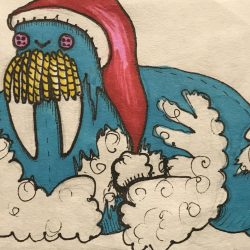
Home Harvest Cookies

It’s these cookies I’m always coming back to this time of year. The pumpkin, the spice, the little tea frosting. I started making them back in, oh it had to have been ’89. I was trying to figure out what to do now that the kids were finally all off on their own.
My quilting guild tried to put it in my head that I was good enough to start up a bakery on my own. I’d sometimes whip something up and take it down to Leonard’s showroom. His flooring customers and employees loved them, but who doesn’t enjoy free cookies? I didn’t think they’d be worth selling. Thought I’d be a fool to waste time on anything like that. But I did like baking and my friends loved eating. I started working on my recipes and testing them out on the ladies at our weekly meetings. Then I’d try them out at the counter of Leonard’s store. (Continue Reading…)






